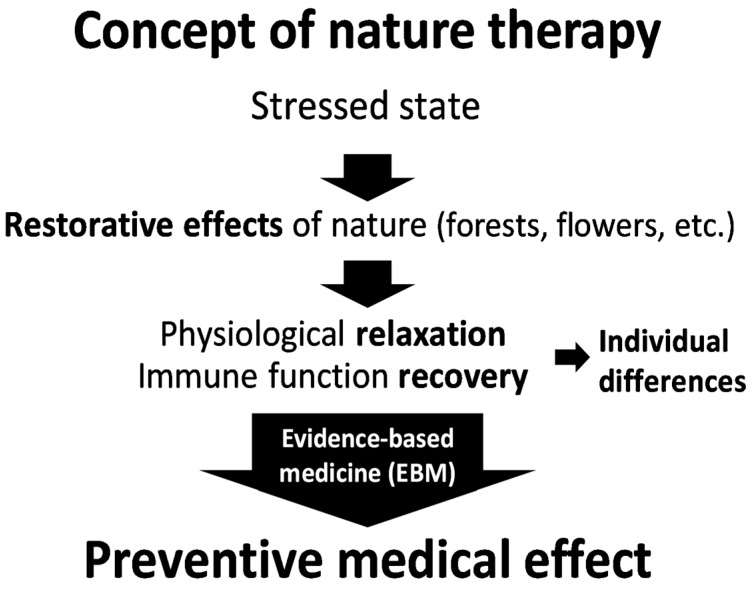More than 56% of people live in an urban environment, and (at least in the US and Europe) spend more than 90% of their lives indoors. As you might imagine, most of that time is spent sedentary, and in front of a screen.
And that’s a problem — mostly because it deprives us of one of nature’s great health benefits.
The Inside Problem
As you can probably imagine, spending all this time inside leads to a bevy of physical and emotional health challenges.
To start with, being inside is often synonymous with screen time. And plenty of evidence shows that being constantly plugged in results in heightened stress levels.
In fact, work-related stress accounts for more than $300 billion in health care costs.
Beyond the costs, however, all this screen-time related stress negatively impacts quality of life and cognitive performance.
A Simple Answer: Forest Bathing
The good news is that there is a simple answer to all of this inside-induced stress: a Japanese practice called forest bathing. And just as you are probably imagining, it involves the simple act of stepping outside.
The practice of forest bathing, or shinrin-yoku, started in 1982 when technology started to boom in the country. The government realized that it was changing the country’s cultural dynamics and saw the beginnings of a health crisis.
To combat it, government leaders believed they needed to affirm and encourage the re-invigoration of the senses. The country enjoyed a rich tradition of connecting with nature — after all, Japan IS 67% forest — and the country’s leaders felt that it was the best way to decrease the overstimulation the tech boom was creating.
The Proven Health Benefits of Disconnecting While Forest Bathing
It turns out, the Japanese government was on to something.
In a controlled clincial trial, it was found that those who practiced forest bathing were able to reduce their systolic blood pressure from 141 to 134 mmHg. While that may not sound like a large decrease, it’s actually metabolically significant.
So why does going out into the woods lower our blood pressure? As the Japanese government suspected, simply untethering from technology is almost an immediate mood booster.
When we turn down all the stimulation from our phones, computers, and unnatural lights, we allow our fight-flight-or-freeze instinct to gently ease, which allows us to enter into parasympathetic function.
This shift allows our blood pressure to drop. Long term, it leads to even more significant health benefits related to blood pressure, nervous system, and metabolic health. Overall, spending more time in parasympathetic function allows for greater longevity and, most importantly, improved quality of life.

The Surprising Benefits of Forest Bathing Go Much Further
But is simply unplugging all there is to these health benefits?
Maybe not.
Another fascinating study found that aside from the “disconnection factor” of not being glued to your screen, there is a compound in pine trees called phytoncides. This compound has been proven to have a profound and positive effect on both the stress hormone cortisol, and on white blood cell counts.
Other research studied the effects of a pure cedar wood compound, Cedrol, when it was vaporized into the air and inhaled.
The researchers measured ECG, heart rate, systolic and diastolic blood pressures, and respiratory rates of both those that inhaled Cedrol and a control group. They found that Cedrol exposure dramatically lowered the levels of each respective value during the short 51-minute experiment.
As if all that weren’t enough, studies also show that forest bathing can actually improve your immunity, increase Natural Killer Cell activity (which may not sound like a good thing, but it also plays an important role in improving your immunity), and even decreases levels of adrenaline and noradrenaline, clear indications of stress-reduction.
A Simple Path to Better Health
While you may not be into aromatherapy, it seems clear that mother nature’s version of it has some real benefits — for the simple price of a walk in the woods.
So, what are you waiting for?
If you want to de-stress and improve your health, all you need to do is put your phone away, unplug your mind, lace up some comfy shoes, and go soak up a leisurely meander through the woods.
It’ll feel good, and your mood, brain, and immune system will thank you!
